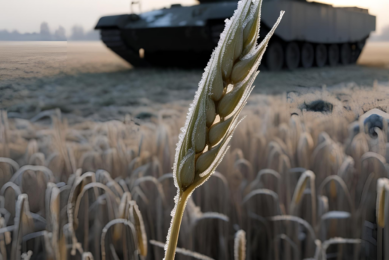Grain production’s margins in Ukraine nears red zone

Russian exit from the Black Sea grain deal brought grain prices on the Ukrainian market to a dangerous low level. If this trend continues, it will make growing grain loss-making for Ukrainian farmers, Svytlana Lytvyn, an analyst of the Ukrainian club of agricultural business, said.
Ukraine’s grain production has always exceeded the internal demand. In previous years, the lion’s share of exports was shipped out of the country in the first half of the marketing year. However, as the Ukrainian seaports remain under siege, export dynamics essentially changed, putting pressure on storage capacities and farmers.
Now, Ukrainian farmers export grain not when they want but when they physically can, according to Lytvyn.
Absence of sufficient export channels
Last year, harvest and carry-over stocks were exported more evenly throughout the year. A similar dynamic is anticipated in 2023, Lytvyn said. Moreover, there are risks that in the absence of sufficient export channels, enormous carry-over stocks will be accumulated in the coming months, she warned.
In addition, logistics costs of grain exports skyrocketed since the Black Sea grain deal expired. Ukrainian press reported that the export of grain via ports along the Danube was $60 to $70 higher compared with export by sea.
In 2023, Ukraine expects to harvest 76.8 million tons of grain and oilseeds, 3 million tons more compared with the previous year, the Ukrainian Grain Association (UGA) said in its recent assessment. In 2023/2024, Ukraine could export 48 million tons of grain against 58 million tons in the previous season, which ended on July 30, UGA stated.
Widening export corridors
To avert a looming oversupply crisis in the grain industry, UGA has recently appealed to Valdis Dombrovskis, Commissioner for Trade of the European Commission, asking to establish alternative routes for grain exports from Ukraine to European ports with subsequent shipment to third countries.
After the end of the Black Sea grain deal, Ukraine faces a need to additionally increase the capacity of the so-called Solidarity Lanes by about 1-1.5 million tons of grain per month.
“This can be done by exporting grain through the ports of the Baltic countries, Germany, the Netherlands, Croatia, Italy and Slovenia. Currently, these routes are little used due to the complexity and logistics costs,” UGA stated.
UGA also proposed to introduce subsidies for European carriers to compensate for the additional costs of transit traffic.











